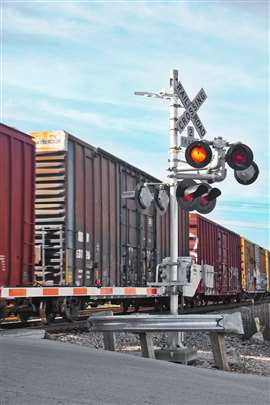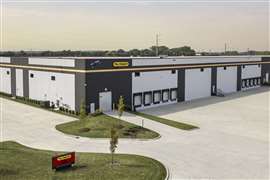New federal program aims to clean up railroad danger zones
06 July 2023
Last month, the Department of Transportation’s (DOT) Federal Railroad Administration (FRA) announced the first round of funding to eliminate dangerous railroad crossings throughout the country. In all, the FRA has awarded more than $570 million in Railroad Crossing Elimination (RCE) Grant Program funding towards 63 projects across 32 states to improve safety and mitigate traffic backups at 400 at-grade crossings nationwide.

The move comes as the U.S. rail industry invests in longer and longer trains to help cut costs. In some places, those trains stretch more than two miles in length, leading to dangerous and inconvenient situations for drivers and pedestrians.
Additionally, last year, there were more than 2,000 highway-rail crossing collisions in the U.S. (resulting in nearly 250 fatalities, according to the AP) and more than 30,000 reports of blocked crossings submitted to FRA’s public complaint portal.
While the rail industry insists that its strategy of reducing staff requirements by running fewer, longer trains is not dangerous, those claims have come under heavy scrutiny in recent months following a number of highly publicized accidents.
Relatedly, FRA has indicated that, for years, it has received complaints from citizens, states and localities regarding the delays and disruptions caused by frequently blocked crossings that force residents to wait hours at intersections, or take detours. Those delays and disruptions can also prevent first responders from getting to emergencies quickly, according to FRA.
As a result, this inaugural round of funding will address grade crossings nationwide, improve safety and make it easier to get around railroad tracks by adding grade separations, closing at-grade crossings and improving existing at-grade crossings where train tracks and roads intersect.
Net positive
Houston is among the largest grant recipients. The city will receive $37 million to eliminate seven crossings where hundreds of blockages were reported last year. Alabama as well, which will receive $41 million for a bridge construction project near Mobile.
Along with projects that build or upgrade physical infrastructure at railroad crossings, FRA awarded $15.7 million for planning activities and $33.1 million for project development and design activities that will build a pipeline of projects for future funding. Additional recipients of notable levels of funding include: the Governors Parkway Railroad Overpass Project in Hammond, IN, for $7 million; the Broward County Sealed Corridor Project in Broward County, FL, for $15.4 million; unlocking the Iron Triangle: Grade Separation of S Town Street in Fostoria, OH, for $7.2 million; and the 32nd Street Underpass Project in Washougal, WA, for $40.2 million.
It goes without saying that the elimination or upgrade of railroad crossings across the country is a net positive for the transportation industry, particularly specialized carriers. And in this case, the RCE Grant Program looks like an endeavor that should do just that, while also enhancing efficiency and, hopefully, profitability.
In response to the funding announcement, Association of American Railroads (AAR) President and CEO Ian Jefferies said in a release last month: “The safest, best crossing is no crossing at all. The projects selected for this initial round of investment will advance safety and reduce traffic delays, while also keeping goods moving across the nation. Everyone wins through this type of smart infrastructure investment, and railroads are proud to support this transformational program.”
AAR added that it has been working with local road authorities, private property owners and the DOT to identify grade crossings that can be consolidated, updated or closed, and that the total number of at-grade crossings in the U.S. has declined by 10 percent since 2005.
According to the DOT, over each of the next four years, additional RCE Grant Program funding will be made available annually. Project selections for other grant programs that will improve freight rail safety and efficiency, strengthen supply chains and expand the passenger rail network – representing billions of dollars in infrastructure investments – will be announced in the coming months.
STAY CONNECTED


Receive the information you need when you need it through our world-leading magazines, newsletters and daily briefings.
CONNECT WITH THE TEAM












